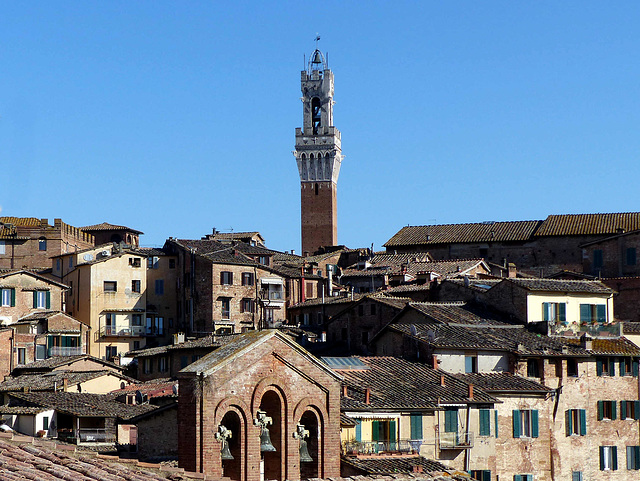Siena - Piazza del Campo
Siena - Piazza del Campo
Siena - Palazzo Pubblico
Siena
Monteriggioni
Florence - Ponte Vecchio
Florence - Sanitari Pinucci
Florence - Piazza della Signoria
Florence - Palazzo Vecchio
Florence - David
Florence - Express Wash
Florence - Cattedrale di Santa Maria del Fiore
Florence - Cattedrale di Santa Maria del Fiore
Florence - Cattedrale di Santa Maria del Fiore
Florence - Cattedrale di Santa Maria del Fiore
Florence - Mercato Centrale
Florence - Mercato Centrale
Florence - San Lorenzo
Florence - Battistero di San Giovanni
Florence - Battistero di San Giovanni
Florence - Battistero di San Giovanni
Florence - Battistero di San Giovanni
Florence - Battistero di San Giovanni
Siena - Borsalino
Siena - Santuario de Santa Catalina
Siena - Santuario de Santa Catalina
Siena - Cattedrale Metropolitana di Santa Maria As…
Siena - Cattedrale Metropolitana di Santa Maria As…
Siena - Cattedrale Metropolitana di Santa Maria As…
Siena - Cattedrale Metropolitana di Santa Maria As…
Siena - Cattedrale Metropolitana di Santa Maria As…
Siena - Basilica di San Domenico
Siena - Basilica di San Domenico
Siena - Basilica di San Domenico
Siena
Eremo di San Salvatore di Lecceto
Eremo di San Salvatore di Lecceto
Eremo di San Salvatore di Lecceto
Eremo di San Salvatore di Lecceto
Sovicille - Area archeologica di Malignano
Sovicille - Area archeologica di Malignano
Rosia - Pieve di San Giovanni Battista
Rosia - Pieve di San Giovanni Battista
Rosia - Pieve di San Giovanni Battista
Frosini
Location
Lat, Lng:
You can copy the above to your favourite mapping app.
Address: unknown
You can copy the above to your favourite mapping app.
Address: unknown
See also...
Keywords
Authorizations, license
-
Visible by: Everyone -
All rights reserved
-
86 visits
Siena - Torre del Mangia


The oldest aristocratic families in Siena date their line to the Lombards' surrender in 774 to Charlemagne. At this point, Frankish overseers married into the existing Sienese nobility. Feudal power waned, however, and by the death of Countess Matilda in 1115 the border territory of the March of Tuscany which had been under the control of her family, the Canossa, broke up into several autonomous regions. This ultimately resulted in the creation of the Republic of Siena.
The Republic existed for over four hundred years, from the 12th century until 1555. In contrast to Florence, Siena was on the Ghibelline side in the dispute between the emperor and the papacy and thus received various privileges. Essentially, however, behind this conflict was an economic rivalry between the two trading cities. The Florentines were defeated at the Battle of Montaperti in 1260. During the golden age of Siena before the Black Death in 1348, the city was home to 50,000 people.
Unlike the Medici, who ruled in Florence, no family was able to establish a stable dynasty. In the War of 1551–59, the republic was defeated by Florence in alliance with the Spanish crown. In 1512 the city found itself under the protection of Charles V. The citizens rebelled against the tyranny of the Spaniards, but In 1555 Siena was taken after a long siege and two years later given as a fief to Cosimo I de Medici, under whom it became part of the Grand Duchy of Tuscany.
The "Torre del Mangia" is part of the town hall "Palazzo Pubblico", which is located in Siena's most famous square, the "Piazza del Campo". The tower was built between 1325 and 1344 and is 102m high.
The Republic existed for over four hundred years, from the 12th century until 1555. In contrast to Florence, Siena was on the Ghibelline side in the dispute between the emperor and the papacy and thus received various privileges. Essentially, however, behind this conflict was an economic rivalry between the two trading cities. The Florentines were defeated at the Battle of Montaperti in 1260. During the golden age of Siena before the Black Death in 1348, the city was home to 50,000 people.
Unlike the Medici, who ruled in Florence, no family was able to establish a stable dynasty. In the War of 1551–59, the republic was defeated by Florence in alliance with the Spanish crown. In 1512 the city found itself under the protection of Charles V. The citizens rebelled against the tyranny of the Spaniards, but In 1555 Siena was taken after a long siege and two years later given as a fief to Cosimo I de Medici, under whom it became part of the Grand Duchy of Tuscany.
The "Torre del Mangia" is part of the town hall "Palazzo Pubblico", which is located in Siena's most famous square, the "Piazza del Campo". The tower was built between 1325 and 1344 and is 102m high.
Marco F. Delminho, Annemarie, kiiti have particularly liked this photo
- Keyboard shortcuts:
Jump to top
RSS feed- Latest comments - Subscribe to the comment feeds of this photo
- ipernity © 2007-2025
- Help & Contact
|
Club news
|
About ipernity
|
History |
ipernity Club & Prices |
Guide of good conduct
Donate | Group guidelines | Privacy policy | Terms of use | Statutes | In memoria -
Facebook
Twitter

Sign-in to write a comment.